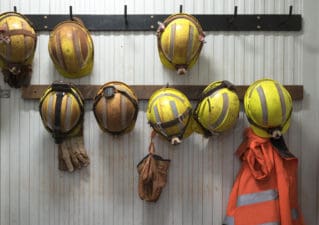During a conference call on Wednesday, Teck Resources Ltd. (TSX:TCK.B)(NYSE:TCK) CEO Don Lindsay said that the company’s dual-class share structure makes it easier to take a long-term view, which is critical in today’s low commodity price environment. He also said there have been no discussions about collapsing the structure.
Under the structure, Teck’s Class A shares have 100 times the voting power of Class B shares, which gives Chairman Norman Keevil and his family nearly 30% of the total votes, despite holding a far lower economic interest.
So has the structure actually been good for shareholders? And what does it mean for Teck going forward?
The case for dual-class share structures
At most publicly traded companies, there is tremendous pressure to achieve short-term results, and this can certainly impact long-term performance. According to a recent survey, 55% of public company executives would not initiate a beneficial project if it meant a decrease in the next quarter’s earnings.
If a company fails to meet its short-term expectations, then it can lead to a whole host of problems. Activist hedge funds (many of which are renowned for being too short-term focused) could step in. Pressure could mount for management to be fired. Perhaps a hostile takeover could come at an inopportune time. All of these events would look great for shareholders in the short term, but destroy value in the long term.
Do these principles apply to Teck?
To answer this question, one must take a look at Mr. Lindsay’s track record as CEO of Teck.
Mr. Lindsay’s tenure stretches back to 2005, but his biggest impact on Teck came in 2008 when the company paid US$14.1 billion to buy out Fording Canadian Coal Trust. This transaction had the worst-possible timing, since it occurred right before the financial crisis. As a result, Teck nearly went bankrupt.
To Mr. Lindsay’s credit, he managed to save the company from oblivion, and Teck came roaring back. But there was another problem with the deal: he severely overpaid for the asset.
Mr. Lindsay’s tenure as CEO has also been marked by the acquisition of a 20% interest in the Fort Hills Oil Sands project. But there was never any need for a mining company like Teck to do this and, given the state of the oil sector, it is clear once again that Mr. Lindsay got a bad deal.
What has been the effect of all of this? Well, Teck’s share price has declined by more than half during Mr. Lindsay’s tenure. Meanwhile, mining giants like BHP and Rio Tinto have seen their shares slightly increase. Clearly, Teck’s investors would have been better off if the company were bought out.
What does this mean going forward?
There is some good news and some bad news here. The good news is that Teck isn’t in a position to make any more major acquisitions. And in this type of scenario, Mr. Lindsay has actually proven himself to be an effective CEO.
The bad news is that Teck is unlikely to get bought out. This is a shame because the mining sector is badly in need of consolidation, and a takeout would probably mean a fat premium for Teck’s shareholders.
So, to get back to Mr. Lindsay’s comments, they certainly were inappropriate given Teck’s history. They also do not reflect the company’s future. And this is something investors must keep in mind before investing in Teck.




